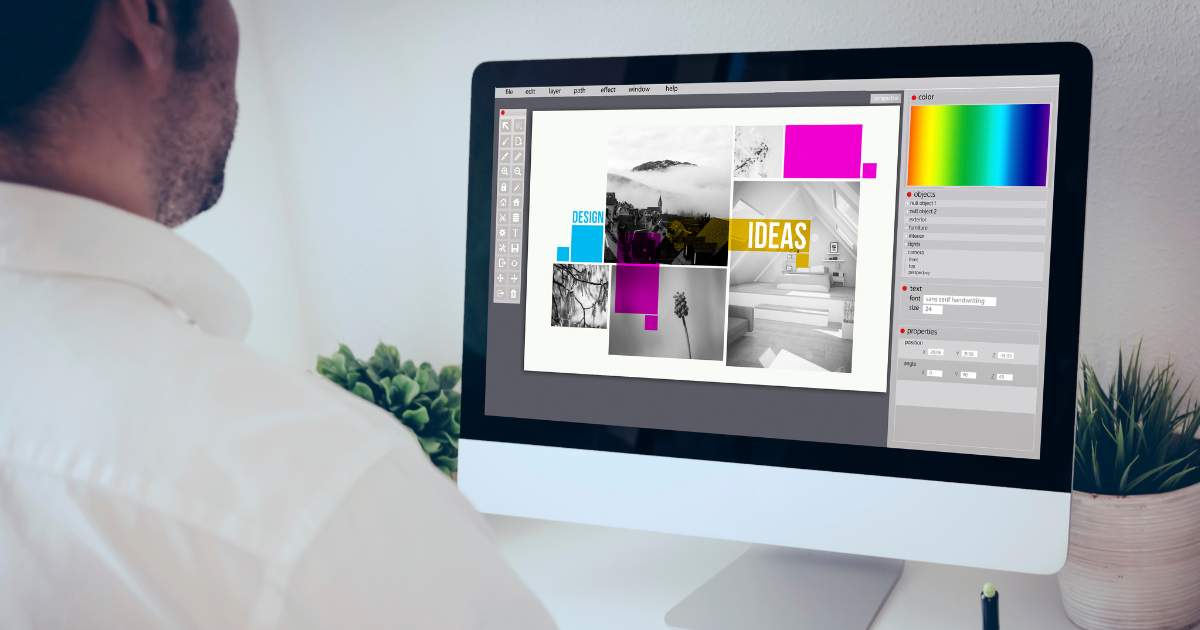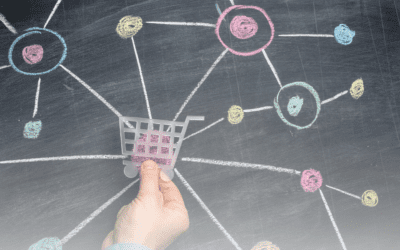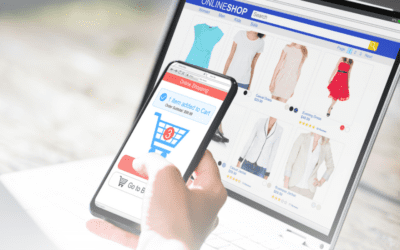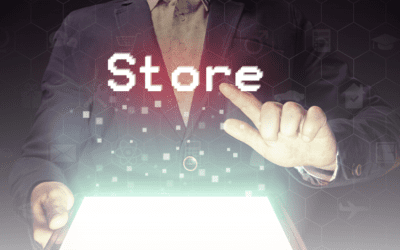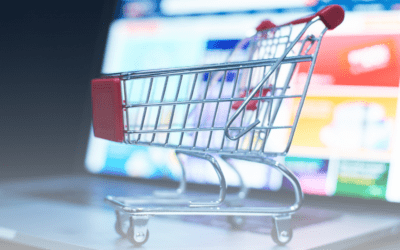A standout logo is more than art—it’s your business’s first handshake with the world, encapsulating your core values and identity. This comprehensive guide will explore various aspects and strategies for creating custom logos for businesses, ensuring that your logo not only stands out but also communicates your brand effectively.
Understanding the Importance of Custom Logos
Custom logos are much more than aesthetic symbols; they are the foundational element of a company’s brand identity. A unique logo distinguishes your business from competitors, creating a distinct and recognizable presence in a crowded market.
- Brand Differentiation: In today’s competitive marketplace, standing out is crucial. A custom logo acts as a quick visual demonstration of your company’s unique approach and personality. It differentiates your business from others by providing a visual association to your brand’s unique story, which can be crucial for capturing attention in a fast-paced consumer environment.
- Customer Loyalty and Branding: A well-crafted logo can cultivate customer loyalty. When customers see a logo they recognize and trust, it evokes a sense of familiarity. This recognition helps build an emotional connection, making it more likely that customers will choose your brand over others repeatedly. This loyalty begins with a logo that communicates stability and reliability.
- Professional Image: A custom logo enhances your professional image. It suggests that your business values professionalism and is committed to establishing a reputable brand. This can be particularly influential when trying to attract new clients or enter into business partnerships, as a professional image instills confidence and trust.
- Communication Tool: Your logo communicates various aspects of your business through its design elements. The colors, font, and style can convey whether your brand is luxurious and sophisticated, fun and energetic, or innovative and modern. Each element is a clue to the viewer about the kind of service and commitment they can expect from your business.
- Consistency Across Marketing: A logo provides a consistent foundation for your marketing materials. Whether on a business card, a website header, or a promotional product, your logo maintains the brand’s essence across all platforms. This consistency helps strengthen the brand’s identity and ensures that all marketing strategies are aligned with what the brand stands for.
- Enhancing Memorability: The simplicity or complexity of a logo plays a key role in how well it is remembered. A distinctive but straightforward logo can be easily recalled by customers, making it more likely that they will think of your brand when making related purchasing decisions.
- Economic Advantage: Investing in a custom logo can save money in the long run. While the upfront cost might be higher than choosing a generic template, a unique logo is less likely to need significant redesigns as your business grows and evolves. This longevity makes it a cost-effective component of your branding strategy.
Key Elements of Logo Design
- Simplicity: Effective logos are often simple, making them easy to recognize and versatile enough to work across multiple media.
- Memorable: Good logos are distinctive and memorable, ensuring they stick in the viewer’s mind after just a brief glance.
- Timelessness: A great logo should endure the test of time, remaining effective for many years without needing significant updates.
- Appropriateness: The logo should be appropriate for the business it represents, aligning with the company’s industry and target audience.
- Versatility: It should work well in different sizes and on various backgrounds, maintaining its integrity and effectiveness whether printed on a large billboard or a small promotional item.

Design Process and Considerations
Creating a custom logo is a nuanced process that involves several crucial stages. Each stage is designed to ensure that the final logo not only looks appealing but also embodies the brand’s ethos and meets its strategic objectives.
Research and Brainstorming
Understanding your industry standards and target demographic is essential. Start by analyzing competitor logos, market trends, and consumer psychology. This research will help you identify what resonates with your audience and what has been overused in your market. Gathering these insights is fundamental in crafting a logo that stands out for the right reasons.
- Detailed Competitor Analysis: Examine the logos of your key competitors for their design elements, color usage, and typographic styles. This will help you understand the common visual themes in your sector and identify opportunities to differentiate.
- Trend Evaluation: Keep an eye on emerging design trends, but also consider timeless elements that might keep the logo relevant longer.
- Consumer Psychology: Dive into the psychology of colors, shapes, and fonts, understanding how they impact viewer perception and emotion, ensuring the logo aligns with the emotional response your brand aims to evoke.
Conceptualization and Sketching
Begin with rough sketches and basic concepts. This exploratory phase is crucial for translating the brainstormed ideas into initial visual representations. Encourage creativity and numerous iterations without concern for perfection.
- Sketch Variations: Create multiple sketches, experimenting with different concepts and elements that reflect the core brand values.
- Collaborative Input: Involve your team or stakeholders during this phase to incorporate diverse perspectives, which can enrich the design process.
Refinement and Digitization
Using digital design tools, refine your sketches into more polished and defined logos. This stage involves detailed adjustments to bring clarity and professionalism to the visual concepts.
Color Palettes: Select colors that not only appeal aesthetically but also convey the emotions and personality of the brand. Utilize the brand’s color scheme to enhance brand recognition.
Typography: Choose fonts that complement the brand’s character while ensuring legibility across various sizes and media.
Symbolism and Iconography: Refine symbols and icons that can effectively convey your brand’s story at a glance.
Feedback and Revisions
Before finalizing the logo, present it to different stakeholders to gather feedback. This feedback is crucial as it provides different perspectives and can highlight potential improvements.
Iterative Revisions: Be open to making adjustments based on the feedback to refine the logo further. This iterative process helps in crafting a logo that not only meets the aesthetic standards but also fulfills functional needs.
Validation with Target Demographic: If possible, test the logo options with a segment of your target audience. This can provide direct insight into how your logo might be perceived by potential customers.
Final Touches: Incorporate all the feedback and finalize the design, ensuring that the logo is versatile enough to be effective across various applications—digital, print, large scale, and small scale.
How Much Does Logo Design Cost?
The cost of logo design can vary widely based on several factors including the designer’s expertise, the complexity of the design, and any additional branding services required. Here’s a general breakdown of what you might expect:
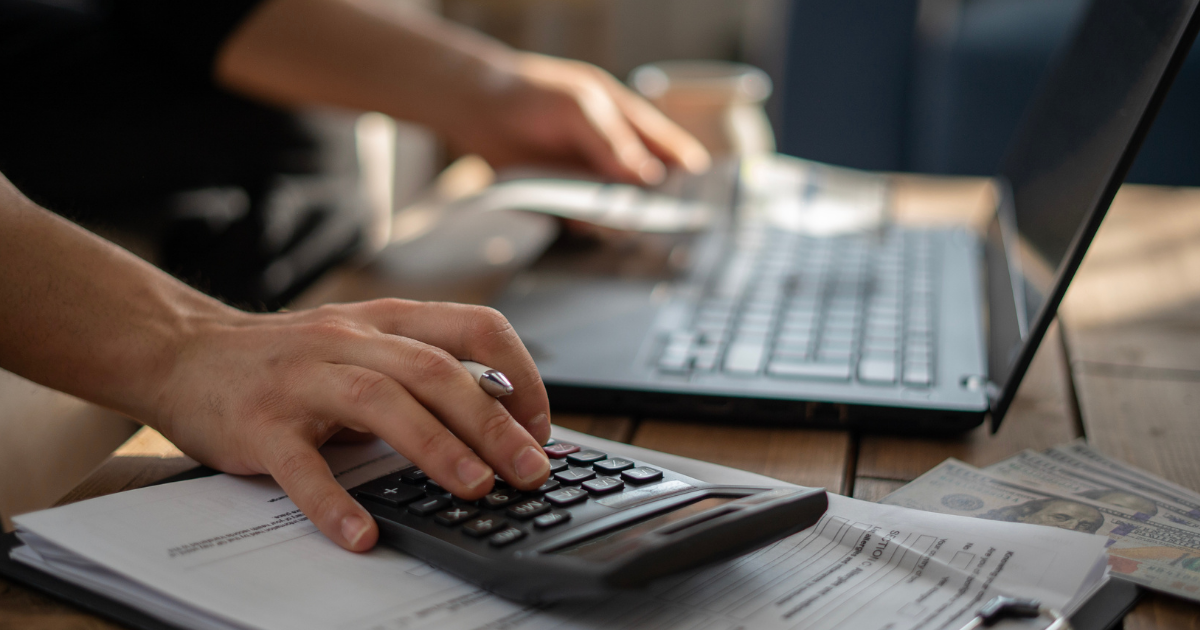
DIY Logo Design Tools
Many online platforms offer free or low-cost logo design tools. These might range from free to around $50 if you purchase a basic package that includes high-resolution downloads and some customization options.
Freelance Designers
Prices can vary significantly based on the designer’s experience and location. Freelance designers might charge anywhere from $100 to over $2,000 for a logo depending on their skill level and the project’s complexity.
Professional Design Agencies
Working with a full-service design agency will typically cost the most. Prices can range from a few thousand dollars to $10,000 or more, depending on the agency’s renown and the breadth of services provided.
Design Contests
Some platforms offer the ability to run a contest where multiple designers submit proposals. You can set a budget starting around a few hundred dollars and can go up to several thousand, depending on how much you want to incentivize high-quality submissions.
Cost Considerations
Understanding the cost of logo design is crucial for businesses preparing to invest in their brand identity. The pricing of logo design services can vary dramatically based on several factors. These include the complexity of the design, the reputation and experience of the designer or agency, the scope of the design project, and any additional branding services required.
Factors Influencing Logo Design Costs
1. Design Complexity
Simple logos may involve minimalistic shapes and monochromatic colors and can be on the lower end of the cost spectrum. In contrast, a complex logo design that includes custom illustrations or intricate typography can significantly increase the cost.
2. Designer’s Expertise and Reputation
Experienced designers or well-established design agencies typically charge more due to their proven track record of delivering high-quality designs that effectively communicate a brand’s identity. The assurance of quality and reliability justifies the higher fees.
3. Additional Branding Services
Many businesses opt for comprehensive branding packages that include not only the logo design but also the development of a full brand identity—such as business cards, letterhead, and marketing materials. These additional services can increase the overall cost but ensure brand consistency across all platforms.
4. Geographical Location
Designers in major metropolitan areas or from countries with a higher cost of living may charge more than those in other regions. This variation reflects the economic conditions and the local market rates for professional design services.
Leveraging Technology
Modern logo design heavily relies on digital tools and platforms. AI-powered tools like Looka and Hatchful help streamline the design process by allowing for quick generation of logo concepts that can then be customized to better fit the brand.
Creating a custom logo is a critical investment for any business. It requires thoughtful consideration of various design elements and a clear understanding of your brand’s identity. By following these guidelines, businesses can ensure that their logo effectively represents their identity and appeals to their target audience.
Key Takeaways
- Custom logos are crucial for brand identity and differentiation.
- Effective logos are simple, memorable, and relevant to the business.
- The design process should include thorough research, conceptualization, and feedback.
- Costs can vary widely, but there are tools available for all budget levels.
- Digital tools and AI can streamline the logo design process, making it more accessible.
Connect with Proforma Battlefield for Tailored Promotional Solutions
Whether you’re looking to elevate your brand presence or seeking innovative promotional products, Proforma Battlefield is your go-to partner. Our commitment to quality, creativity, and efficiency sets us apart in delivering customized solutions that resonate with your audience.
Interested in a bespoke promotional strategy? Contact us today to discover how we can help your brand shine.
